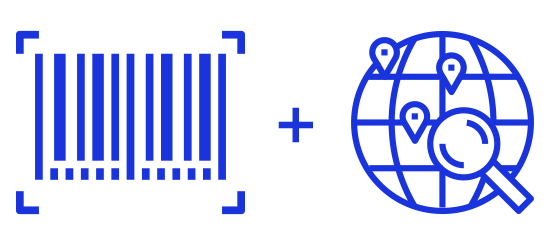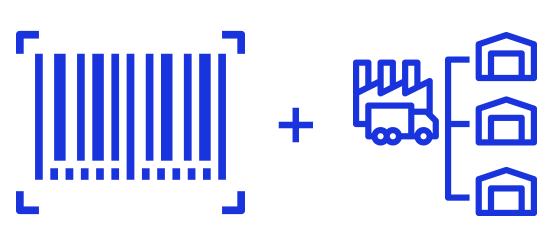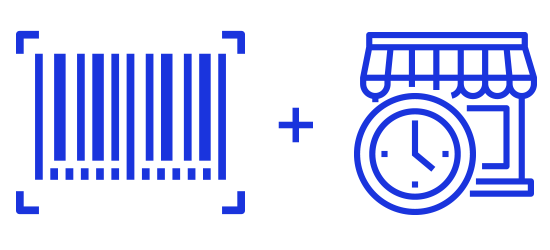Before fast food chains, there were locally owned mom-and-pop drug stores and soda fountains sprinkled across the nation. People would go to these local hubs to get a soda and that jolly greeting from the owner, let’s call him Uncle Jimmy, behind the bar. He knew your name, he knew your family, and he gave you a nickel off your milkshake every time you came in “for being a loyal customer.” Customers felt valued, like family, and that familiarity is part of what made them feel loyal.
Today we value convenience. We want our food quickly with an efficient, frictionless experience. But that doesn’t mean your customers can’t have that same nostalgic yearning to be greeted by Uncle Jimmy behind the bar.
Statistics show that personalization and customer loyalty programs are the most important thing to your customers, more so than even the taste of the food.
A new era for customer loyalty
You may be saying, “But I already have a customer loyalty program in place.” Traditionally, customer loyalty programs focus strictly on signups and discounts. In the past, you might have sent out a mass promotion for your most recently released menu item. That’s not enough anymore. Now your customers want promotions and rewards points based particularly on what they want and when they want it. But how do you find out that information? Through intelligent customer data.
Uncle Jimmy knew that a certain regular always ordered a Diet Coke and would have it sitting on the bar cold and bubbly by the time that customer got to the table. That’s what your customer wants. There’s no way for you to know all your customers personally the way Jimmy did, but by combining POS data with your other various sets of data sources, you can and should have a holistic view of your customer.
If you are only utilizing your POS system to process payments and manage business operations and not referencing the data to understand your customers’ buying habits and trends, you are missing out on key personalized marketing and customer loyalty opportunities. The key is a modern data infrastructure that combines your POS data with all other customer data sources to extract real-time insights. These insights not only impact the customer experience, but it enables marketing teams to make smart decisions based on data versus their “gut feeling.”
In this blog post, we will show you 5 ways to combine POS data with other data sources to give your customers what they want, when they want it.
1.
Combine POS data with other types of sales data to analyze pricing and buying behaviors

There are many insights to be gained from combining POS sales data with data from your app, loyalty cards, online sales and SKUs. You can gain key insights from past purchases, frequency of purchases and types of products that are centered around certain demographics.
For example, families are more likely to buy beers and diapers, and teenagers are more likely to buy acne products. When you combine all of this data you can tell the nature, ethnicity, age and size of each family and what they buy the most, which is a key opportunity for marketing segmentation.
But that’s not enough. You should also be comparing your real-time POS data with real-time market data based on industry trends, industry purchasing insights, and competitor behaviors. Being able to combine your sales data with market data allows you to be a trend spotter rather than a trend follower.
A prime way to source that data is through a data exchange. It’s no secret that when you click on the small-type of a new retail app’s terms and conditions, you’ll find a reference to a comment that says “You agree that XYZ, Inc. can share your data with its affiliates.” Well, what is an affiliate?
An affiliate is a data broker that buys anonymized data from your firm and your competitor’s firm and “combines” them to create data enrichment services. These data ecosystems are available for you to (re) purchase for yet more insight along with the buying strategies of customers that you’ve profiled.
2.
Combine POS data with marketing metrics across app, web, and social media to create an effective omnichannel experience

There are multiple types of marketing metrics you can look at to get a more holistic view of your customer. Looking at the average conversion rates for promotions and campaigns across different channels such as social media, apps, text messages and your website can give you insights into where your marketing is most effective. If you compare your POS data and see that an item is performing well in the restaurant, but the campaign isn’t converting to leads, that could highlight that the problem is in the marketing and not with the actual product itself.
It’s also important to look at brand advocate scores, which show how many customers spread positive information about your brand on social media, and factors such as churn rate. Maybe you have more churn within a certain demographic. Are you leaving out a certain group of people in your marketing? Or are you doing particularly well with another? This will enable you to make key marketing decisions.
For example, maybe you see that working moms from the age of 18-35 are coming to your restaurant frequently and spending a large amount of money. You may also see that they are posting positive reviews on social media about your brand. Looking across channels, you see they interact most with the app when it comes to purchasing. The meal they purchase the most is the family-style rice bowls, and they usually buy them on their way home from work.
After looking at all the information, you send out a notification from your app at 4:30 PM, right when they are about to get off work and probably thinking about what they should cook for dinner.
“Hi Anna, we see you’ve been enjoying our family-style rice bowls, so we wanted to send you a little thank you gift with this $5 off code!” Anna receives the promotion and thinks, “That came at a helpful time. This brand knew exactly what I want and when I needed it. SOLD!” Working mothers everywhere rejoice. Your brand also takes part in the rejoicing as you demonstrate understanding your customer and continue working toward increasing lifetime value scores.
3.
Combine POS data with location data to determine location-based menu items, site locations and location-based campaigns

There are additional data sets to consider analyzing, in conjunction with your POS data, for optimal location intelligence. Third party demographic data sources like the Census are a great source of data for location-based decisions, but there are other options.
Blueprint has partnered with Precisely, the leader in data integrity, to help companies gain competitive advantages in location planning. Companies like Precisely offer you enriched data sets to better inform you on geospatial facts and figures on average home prices, income levels, sociodemographic data, church affiliation, education, house-types (ownership versus rental) and more. Knowing this information allows you to continue to enrich your customer segment and proclivity to buy.
Another great source of data for this is your mobile interactions. When mobile apps ask customers to approve the enabling of the location feature of the phone, it’s not because they care what store is close to them, exclusively. Sure, that’s helpful, but it’s also so they can track their general drive-time and neighborhood affinity.
Knowing that you go from home to school to work, to the ballfield, to the airport tells me a lot about you. This gives more segmentation features to enrich my understanding of “you. Regional information can also inform where you should lean into or steer clear of certain products, campaigns or pricing schemes.
4.
Combine POS data with supply chain data to reduce waste and predict demand

It’s not enough to offer your customers what they want, when they want it. You also must ensure that you actually have it, when they want it. With a modern data estate that has the ability to stream real-time sales and inventory data, you can compare what demand looks like to what your inventory needs will be from day to day instead of waiting six weeks for a report with a traditional legacy data estate.
With social media trends exploding in minutes, and the overnight popularity of products featured in videos that go viral, your company could see extreme heights in sales in record time , which is exactly what happened to Ocean Spray when a video of a man drinking their cranberry juice on a skateboard singing a Fleetwood Mac song went viral. Ocean Spray had to increase production and hire new employees as a direct result of that viral video.
Events like this are why the traditional method of looking at sales year after year and predicting your sales will be the same now is an outdated method. With a modernized data estate and functional dashboards, all the data you want and need can be accessed easily, no matter your tech skillset.
On the opposite end, combining POS data with supply chain data can help you eliminate waste by not buying too much of a certain menu item. Many times, QSR chains will order too much food in fear that they will run out. This causes an incredible amount of food waste. For roles in charge of purchasing, you should be notified in advance of items that won’t perform well based on prediction models that leverage your POS data in real-time.
5.
Combine POS data with labor data to increase employee effectiveness

As mentioned earlier, the most important thing to consumers is their customer experience. A big part of that customer experience is the interaction and buying experience with your employees. You can now combine POS data with labor data to analyze where you may have gaps in performance, skill sets and other operational efficiencies What are their sales? What are their upsell rates? Equip your store management with future-ready workforce by working with data you already own.
Sharpen the marketing sphere
With all this data feeding into one source, there are ways you can finetune your data. There are services that provide data-correction augmentation. You can spot fake email addresses or correct home addresses using national change-of-address registries so that you don’t waste time on fake accounts.
When considering what your customers want, it’s also important to consider what they don’t want. That’s where customer preference systems come in. Mature retail companies ensure that customer-touch settings, e.g. do-not-track, do-not-contact, text-but-not-email and many other customer-preference settings are in place to make certain you don’t turn a happy customer into a spammed/upset customer. Again, you must continually know your customer.
78% of brands say they struggle with “data debt” or not having the right data, at the right time to launch relevant, personalized strategies. You most likely already have the data, you simply don’t have the tools in place to make it usable, useful or delightful. Blueprint works with you to meet you where you’re at and builds you into an empowered retailer with the assets you already have: your data.
You have access to all the data you need to turn your customers from strangers to super-fans. The key is in how you access, analyze and act on that data. All of this data + your POS data can be fed into numerous customer-segmentation, clustering and many AI/ML models that can inform next-best-actions for your sales & marketing team.
In the next blog post, we’ll teach you how to take the next step towards accelerating and monetizing your customer loyalty program by streaming, analyzing, and taking action on customer data to create actionable, profitable insights that will revolutionize your business.

